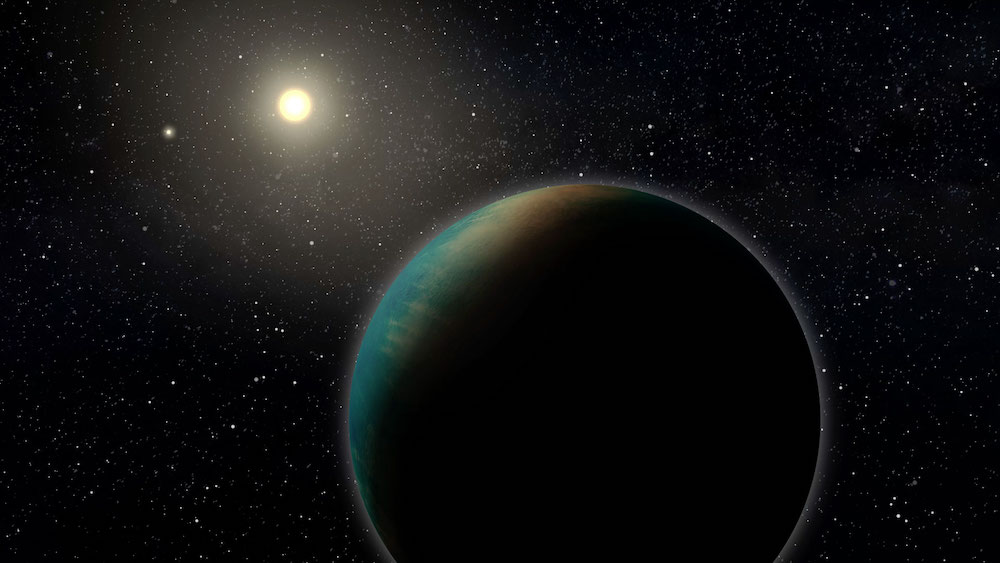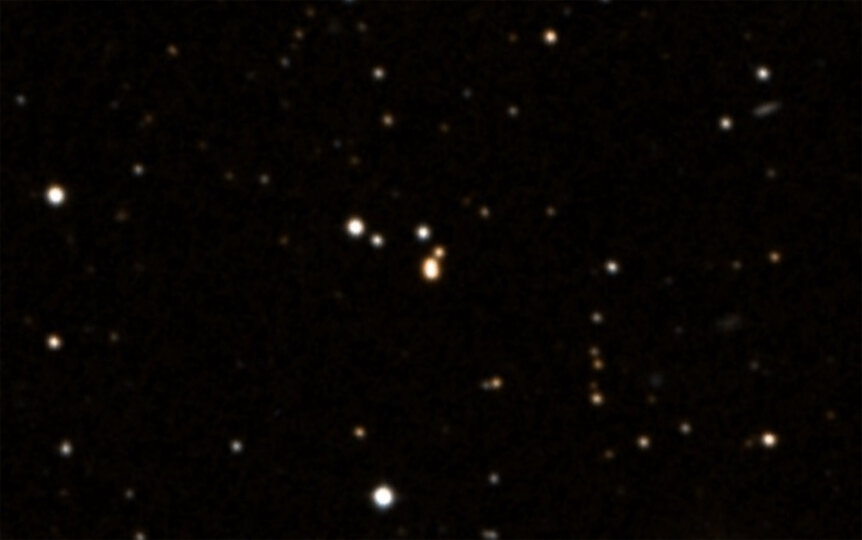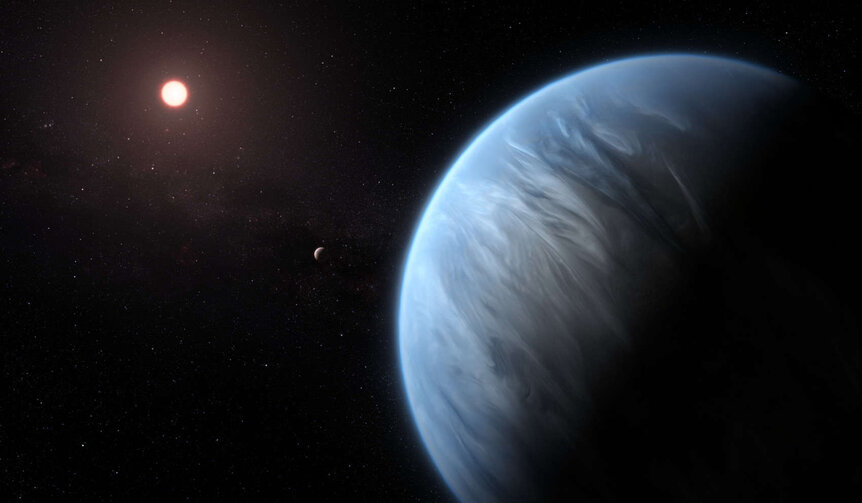Create a free profile to get unlimited access to exclusive videos, sweepstakes, and more!
A nearby super-Earth may be a water world
The planet TOI-1452b is bigger than Earth and may have a lot more water.

A newly discovered nearby exoplanet has turned out to be an interesting one indeed: Not only is it a relatively rare kind of super-Earth, it may also be a water world, covered in a deep ocean!
Maybe. But further observations, including with JWST, could answer a lot of questions.
The planet is called TOI-1452b, orbiting the star TOI-1452. “TOI” means TESS Object of Interest; which in turn means a star observed by TESS — the Transiting Exoplanet Survey Satellite — that may have a planet. TESS stares at hundreds of thousands of stars over many days looking for exoplanets, alien worlds orbiting those stars. If a planet’s orbit is seen edge-on, then once per orbit it blocks a fraction of its host star’s light when it passes directly in front of it — an event called a transit. If we know the star’s size then the planet size can be measured by how deep the dip is.
TOI-1452 is an M-type red dwarf, a star about ¼ the Sun’s mass and radius. It’s much cooler than the Sun and much fainter, putting out a mere 0.007 times as much light as the Sun does. It also has what appears to have a binary companion, another very similar red dwarf about 15 billion kilometers away — three times farther than Neptune’s distance from the Sun.
From the TESS observations the exoplanet TOI-1452b is about 1.67 times the diameter of Earth, so a little over 21,000 km wide [link to paper]. That’s interesting right away. Planets up to about twice Earth’s diameter are called super-Earths, and have a shot at being similar to our own world. If they get a little bit bigger, though, they tend to have much thicker atmospheres, more like Neptune, so ones from 2 – 4 times Earth’s diameter are called mini-Neptunes.
These are the most common kind of planets seen orbiting other stars. However, there’s a dip in the distribution between about 1.5 and 2 times Earth’s diameter, with fewer planets in that range than you’d expect. One reason could be that they started out with more mass but got so close to their stars the heat and light blowtorched a lot of the atmosphere away, or that their cores are so hot after they form that interior heat inflates the atmosphere, and much of it is lost to space. There are other ways a planet can lose its atmosphere, but we need to find a lot more in this “valley” to understand the mechanisms. Any time one like TOI-1452b is found it helps.
The planet orbits its star every 11.1 days, so its year is much shorter than ours, just a week and a half. Given the star’s mass, that means it orbits about 9 million km from the star, 1/16th Earth’s orbital distance from the Sun. But remember, the star is dim; in the end the planet gets about 1.8 times as much light from its star as we do from the Sun. For reasonable assumptions, it has a temperature between 25 and 50° C (about 80 – 130° F). Warmer than Earth, but not wildly so.
This gets interesting when the mass is measured. As the planet orbits the star its gravity tugs on it, so the star makes a little circle as the planet makes a big one. The velocity of the star as it moves can be measured, which yields the planet’s mass: 4.8 ± 1.3 times the Earth’s mass.
That’s a lot, but the planet is also bigger than Earth. It turns out the average density of the planet is about the same as Earth, 5.6 grams per cubic centimeter — or 5.6 times the density of water. That tells us, for example, it’s not a gas giant like Saturn or Jupiter, which have an average density more like 1.
Using sophisticated models of planetary compositions and structures based in part on the abundances of elements seen in the host star, the astronomers find that the planet is likely to have a small metallic core with a thick layer of rocky material above it. But the best fits to the data indicate a high fraction of water in the planet, a shocking 22% by mass (plus or minus 21/13%). Earth’s fraction of water by mass is much, much less than 1%, so if these models pan out this planet is largely water.
And given its temperature, that would be liquid water. So it may be an ocean world. Also given its temperature, a muggy one.
To be fair another model indicated it could be more like Earth, with far less water, but with an atmosphere of hydrogen and helium.
There’s a way to find out: Observe it with JWST. During a transit, some of the star’s light will pass through the atmosphere on its way to us, and different molecules in the air there will absorb different wavelengths of light, allowing them to be identified — this was recently done with the planet WASP39b, showing carbon dioxide in its atmosphere. Water is a great absorber, especially in the infrared where JWST sees. The star is bright in the infrared as well so this wouldn’t even be that tough of an observation. If strong water absorption is seen — or not seen — that would clear up this planet’s character pretty quickly.
So don’t call Kevin Costner just yet.
I’ll add that red dwarfs are the most common kinds of stars in the galaxy, and they are very good at making Earth-sized planets. The TRAPPIST-1 system has seven! Planets around these dim bulb stars may outnumber all the other planets in the sky, so understanding what they’re like is one of the biggest goals in exoplanet science. Follow-up observations of TOI-1452b will, hopefully, be a priority.
















